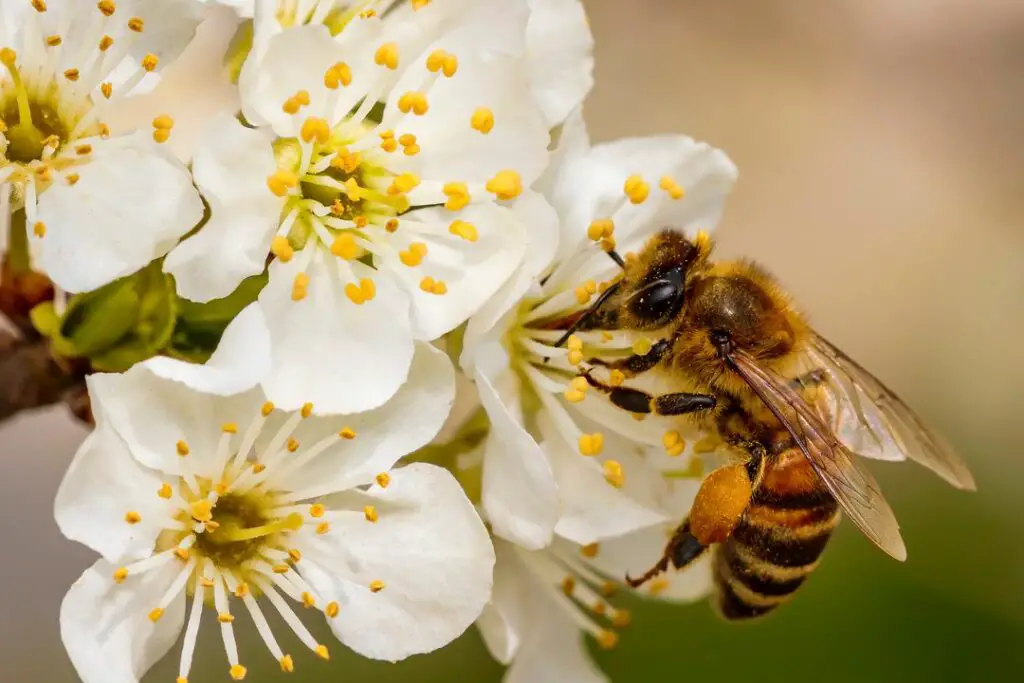Last updated on September 7th, 2023 at 02:13 pm
Bees spend their days buzzing from flower to flower, searching for precious resources. But how do they collect and carry all the nectar they need?
Click here if you’d prefer to watch the video
At Revive a Bee, we’re passionate about making the fascinating world of bees accessible for everyone with simple guides on the amazing world of bees.
Let’s dive into your garden and discover how these amazing insects collect nectar for themselves and the colony.
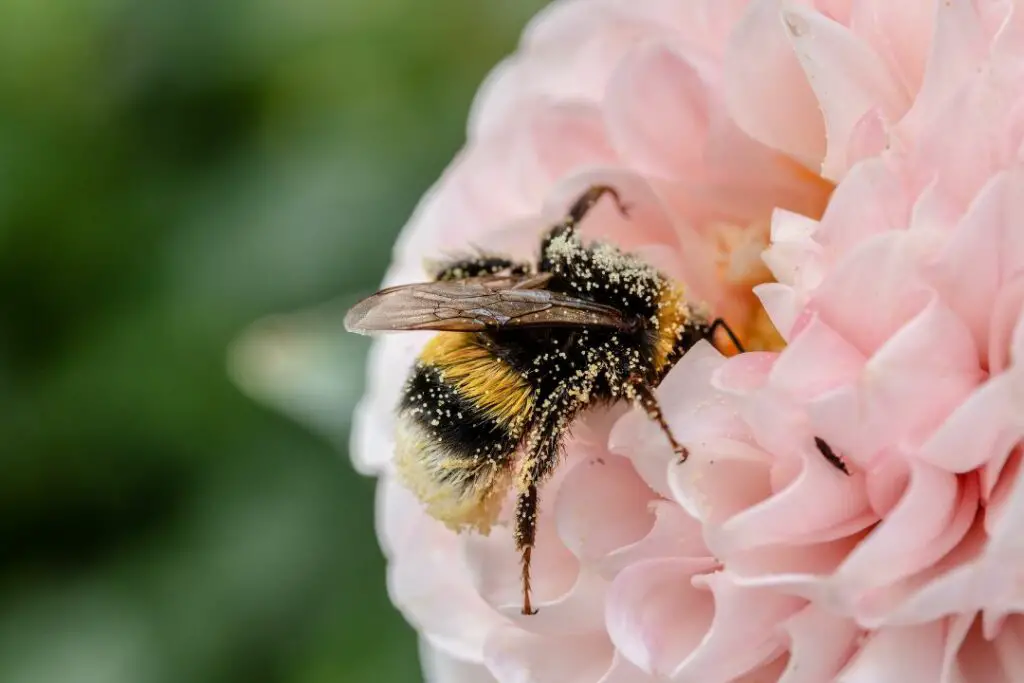
How Do Bees Find Nectar?
As we know, bees collect nectar from flowers to make honey. But how do they find the flowers that have nectar?
Bees have an incredible sense of smell, which helps them locate flowers. They also use their vision to identify flowers with the right colour, shape, and size.
Bees can see ultraviolet light, which is invisible to humans. Many flowers have ultraviolet markings, which serve as a visual cue to bees that nectar is available. This is especially useful for bees foraging in dim light conditions, like early morning or late afternoon.
But not all flowers produce nectar; some produce nectar that is toxic to bees. Using a combination of their keen sense of smell and superhuman eyesight, they can quickly determine if a flower is worth landing on.
They even communicate with each other about the location of good nectar sources through the waggle dance. These dance-like movements indicate the direction and distance of rich foraging areas nearby.
Now that we know how bees locate flowers with nectar let’s dive into why they need it and how they collect and process it.
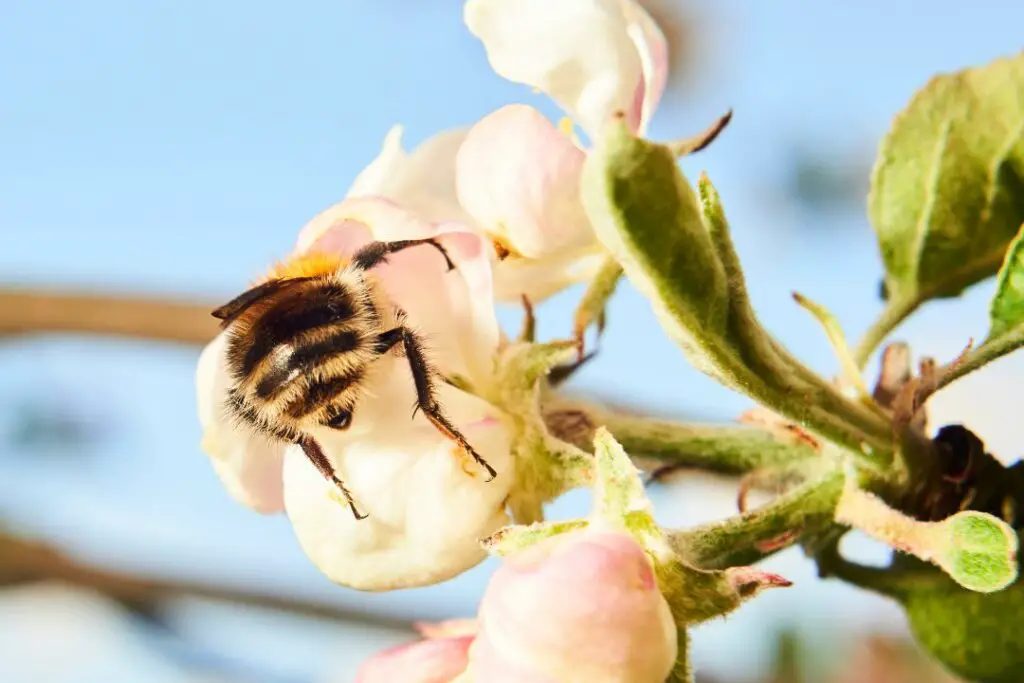
Why Do Bees Need Nectar?
Bees need nectar for two reasons: energy and honey production. Let’s take a closer look.
- Immediate Energy Source: Nectar is rich in sugars, especially sucrose. When bees consume nectar, it provides them with an immediate energy source. Worker bees, which are constantly on the move — foraging, caring for larvae, maintaining the hive, guarding against intruders, and performing other essential tasks — need a consistent energy source.
- Honey Production: Nectar serves as the primary ingredient for honey. Bees collect nectar and bring it back to the hive. Once in the hive, bees process the nectar by enzymatically breaking down the sucrose into simpler sugars: glucose and fructose. This is deposited into honeycomb cells before being fanned by the bee’s wings to evaporate excess water. The result is honey, which the colony stores and uses as a food source, particularly in winter.
In essence, nectar is foundational to a bee’s diet and the overall health and sustainability of the bee colony. It provides essential energy, is a key ingredient in honey production, and is central to the symbiotic relationship between bees and flowering plants.
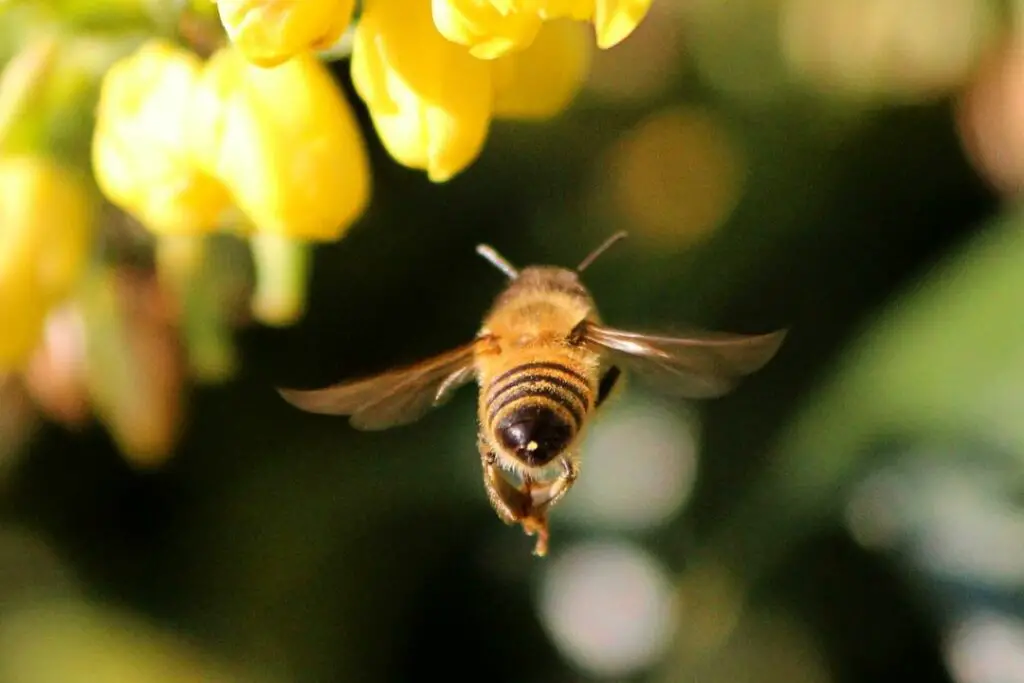
How Bees Collect Nectar
Collecting nectar is crucial for bees because it’s the primary ingredient for honey production. In this section, we will discuss the different ways bees collect nectar.
Role of Legs in Collection
Bees have specialized legs that help them collect nectar from flowers. The front legs of a bee are equipped with spines that allow them to grasp onto the flower, while the back legs have pollen baskets or corbiculae for collecting pollen.
*Additional reading – Learn more about why bees collect pollen in our comprehensive guide.
When collecting nectar, bees use their front legs to hold onto the flower while inserting their proboscis into the nectar-producing gland.
The Role of Proboscis
The proboscis is a straw-like tongue bees use to suck nectar from flowers. When collecting nectar, the bee inserts its proboscis into the flower and sucks the nectar out.
*Interesting fact – Bees can collect up to half their weight in nectar during one foraging trip.
Use of Antennae
Bees also use their antennae to locate nectar-producing flowers. The antennae are equipped with chemoreceptors (scent detectors) that can detect the smell of nectar from a distance.
Once the bee has located the flower, it employs its legs and proboscis to collect the rich nectar.
Honey Stomach’s Role in Nectar Storage
When the bee has collected enough nectar for themselves, it stores it in its honey stomach. The honey stomach is a separate stomach used to collect and store nectar while the bee continues to forage for more.
Once the bee has collected enough nectar, it returns to the hive to drop off its precious cargo.
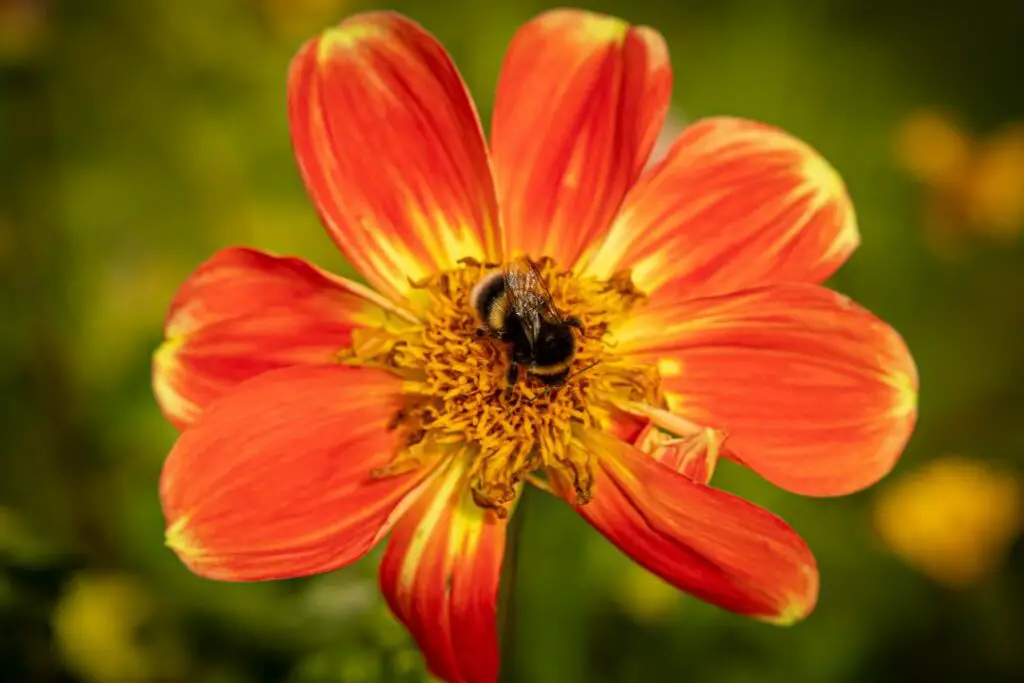
Nectar Transportation
Travelling with half your body weight in a liquid form in your stomach may sound like hard work, but bees have developed powerful wings and even more impressive energy levels to help them along the way.
Honey Stomach Function
The honey stomach, also known as the crop, is a muscular pouch that can expand to hold up to 70mg of nectar. The nectar is mixed with enzymes and proteins from the bee’s saliva, which breaks down the complex sugars in the nectar into simple sugars that the bees can easily digest. The enzymes also help to prevent the nectar from fermenting during transportation.
Energy for Flight
Transporting nectar back to the hive requires a lot of energy. Bees use the nectar they collect as an energy source to fuel their flight back to the hive. As they fly, they beat their wings up to 200 times per second, which generates the necessary lift to keep them in the air.
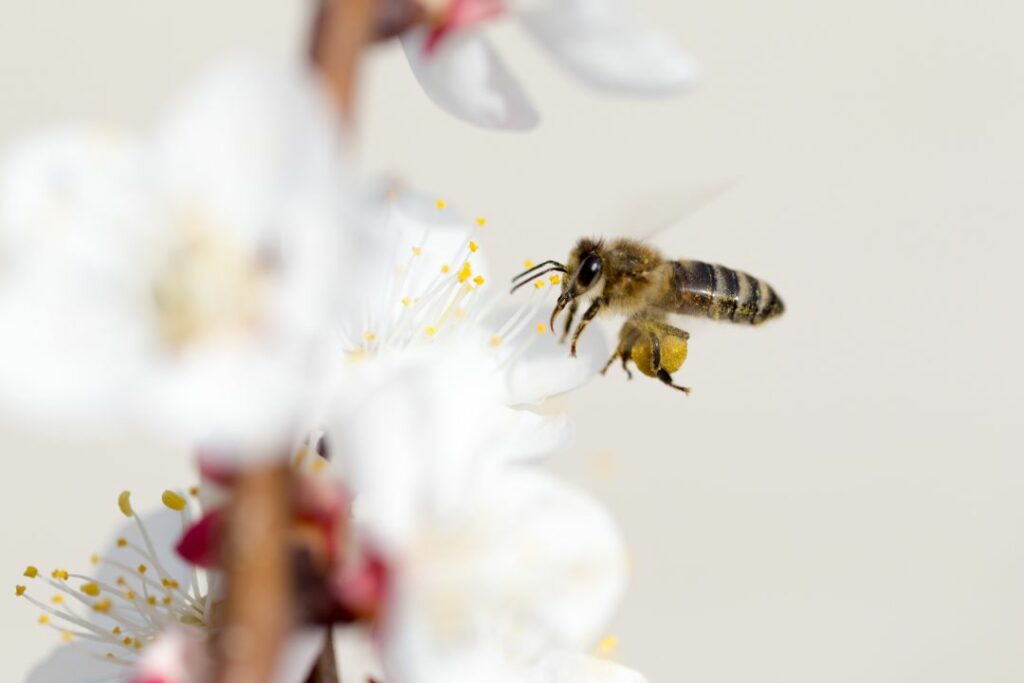
Nectar Conversion to Honey
After collecting nectar from flowers, bees convert it into honey through a complex process that involves enzymes, pH changes, and evaporation. Let’s look at the different steps involved in converting nectar into honey.
Role of Enzymes
Worker bees have special stomach enzymes that help convert nectar into honey. These enzymes break down the complex sugars in the nectar into simple sugars such as glucose and fructose.
The bees then regurgitate the nectar into the honeycomb, where it is stored until it is converted into honey.
Importance of pH
The enzymes in the bee’s stomach work best at a pH of around 7.0. However, the pH of nectar is usually around 3.0 to 5.0. To raise the pH of the nectar, the bees add an enzyme called glucose oxidase to the nectar.
This enzyme breaks down the glucose in the nectar, producing hydrogen peroxide and gluconic acid. The gluconic acid then raises the pH of the nectar to around 7.0, which is the optimal pH for the enzymes to work.
Evaporation and Moisture Content
After the nectar has been converted into honey, the bees need to reduce the moisture content of the honey to around 18%. To do this, they fan their wings over the honeycomb, which causes the water in the honey to evaporate.
This can take several days, depending on the humidity and temperature inside the hive. Once the moisture content of the honey has been reduced to around 18%, the bees seal the honeycomb with wax to prevent any moisture from entering. The honey is then ready to be stored and consumed later.
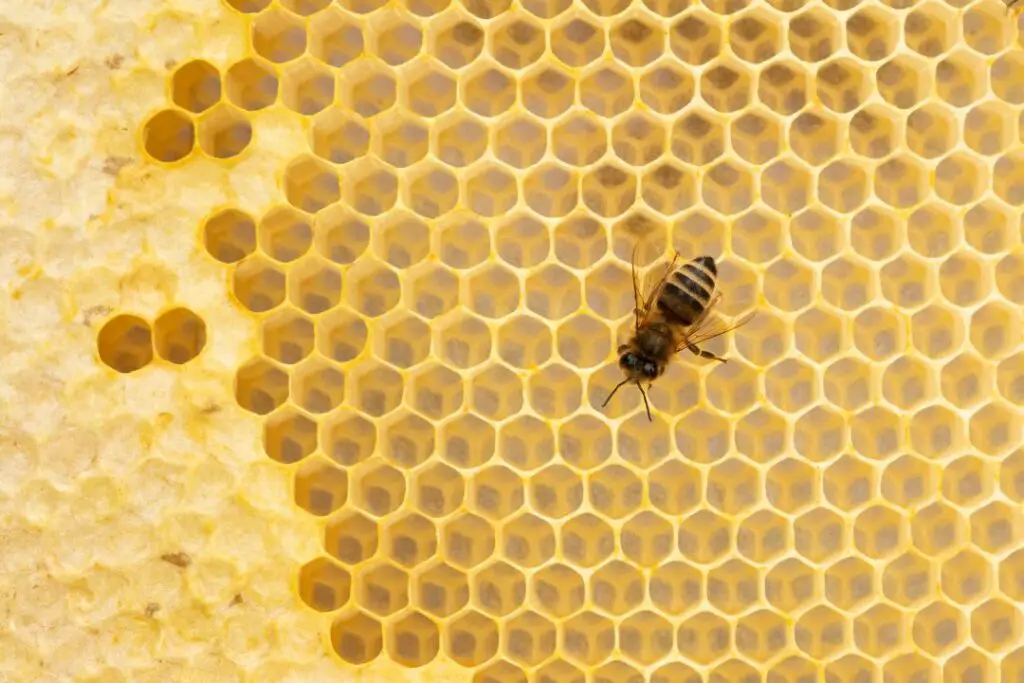
Honey Storage and Use
When bees collect nectar from flowers, they store it in honeycombs in the hive. The honeycomb is a structure of hexagonal wax cells that the bees produce. These cells are used to store honey, pollen, and larvae. The honeycomb is vital to the hive because it provides a safe and secure place for bees to store food.
The Structure of Honeycomb
The honeycomb is made up of beeswax produced by the worker bees. The wax is secreted from glands in the bees’ abdomen and is then moulded into the familiar hexagonal shape of the honeycomb. The hexagonal shape efficiently uses space and allows the bees to store more honey in a smaller area.
Winter Preparation
In preparation for winter, bees will store large amounts of honey in the honeycomb. During winter, the bees cannot collect nectar from flowers and need this stored food to survive.
Feeding Larvae
The honey stored in the honeycomb is not only used as a food source for the adult bees but also for the larvae. The worker bees will feed the larvae with honey and pollen, giving them the necessary nutrients to grow and develop.
In Conclusion
In the intricate dance of nature, bees play a pivotal role, not just as honey producers but as crucial pollinators. Their meticulous process of seeking, collecting, and transforming nectar into honey is a testament to nature’s incredible design.
Through understanding the complexities of these tiny wonders, we gain a deeper appreciation for the balance of our ecosystem.
At its core, the journey from flower to honeycomb is not just about honey production but a story of survival, communication, and the symbiotic relationships that sustain our world.
So, the next time you see a bee buzzing from flower to flower, take a moment to appreciate the marvellous journey behind every drop.

